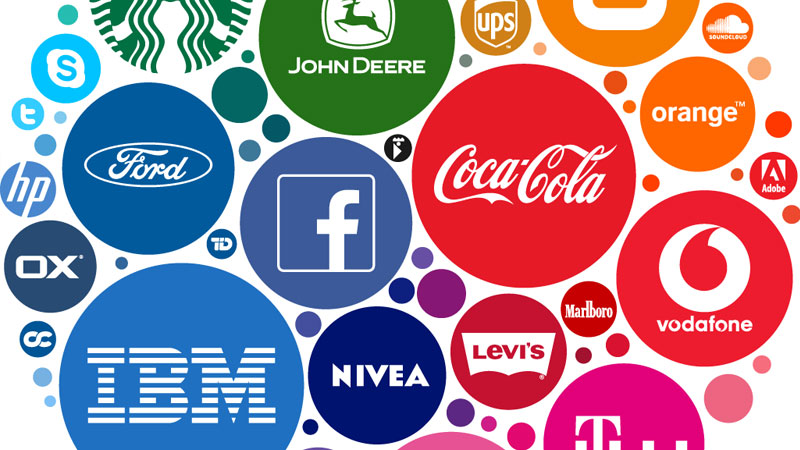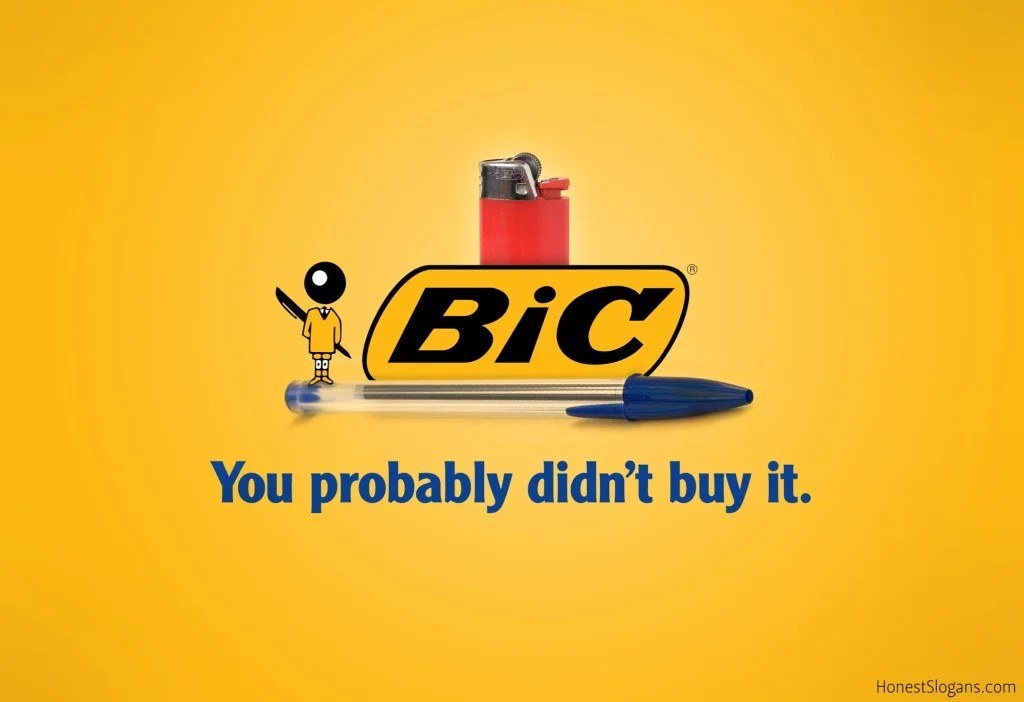What is a brand? What is a branding process? Why is having an authentic brand, the desire of many businesses today? What characteristics should a brand have? What are the stages of building a brand? What are the requirements for the development of a brand?
In the rest of this article, we would like to explain the answers to all the following questions in a very brief and useful way for you. What you need to know about brand and branding, is here. Specially if you are a designer, it writes for you, so stay with us.
What is a brand?
For explaining brand, first we should pay attention to the important part of that. After that we can explain each part and its details. Here we have Important part of a brand and their explanations:
Perpetual process
Branding is the process of creating a unique identity and image for a business or product. It involves the ongoing development, management, and promotion of a brand’s image, values, and reputation. Branding is a perpetual process, an ongoing process that involves continuous efforts to improve and evolve the brand over time.
Identify, create, manage
Branding involves identifying the key attributes that differentiate the brand, creating a brand identity and image that reflects these attributes, and managing the brand to ensure consistency and relevance over time.
Cumulative assets and actions
Branding involve the accumulation of assets and actions over time, such as logos, slogans, packaging, advertising campaigns, and customer experiences, which all contribute to the overall perception of the brand.
Perception of a brand
A brand is not just a logo or a name, but it is the perception that customers and stakeholders have about the brand. This perception is shaped by the brand’s identity, image, values, and reputation.
Stakeholders
Branding involves managing the perceptions and expectations of all stakeholders, including customers, employees, investors, partners, and the broader community. This requires understanding the needs and expectations of each stakeholder group and communicating the brand’s values and benefits in a way that resonates with them.
Overall, branding is an ongoing process that involves identifying, creating, and managing a brand’s identity, image, and reputation. It requires a focus on cumulative assets and actions that contribute to the overall perception of the brand, as well as an understanding of the needs and expectations of all stakeholders.

Why is branding important for any business?
You can understand the importance of having a brand when you know its benefits. If you own a business, this comparison will be easier for you. Just compare the conditions before branding with the conditions after. This is where you will realize its importance. Having a strong brand is really important for businesses for several reasons.
A strong brand helps a business stand out from its competitors. It makes it easier for customers to remember and recognize it. A strong brand builds trust with customers by communicating a clear message and consistent values and promises. A strong brand creates emotional connections with customers, which leads to increased loyalty and repeat business. A strong brand can command a price premium, as customers are often willing to pay more for products or services from a brand they trust and value.
A strong brand also helps attract and retain top talent by communicating a clear sense of purpose and values that employees can align with.
Overall, a strong brand can help a business achieve long-term success by creating a strong reputation, building customer loyalty, and increasing its competitive advantage.

Why you should invest in your brand?
Investing in your brand can have significant long-term benefits for your business. It creates a strong foundation for growth and profitability. Branding can help your business stand out from competitors and make a memorable impression on customers. It also leading to increased recognition and loyalty. A well-developed brand can enhance your business’s reputation and credibility, making it more attractive to potential customers and partners.
Investing in your brand can improve the perceived value of your products or services, allowing you to charge a price premium and increase profitability. A strong brand makes marketing efforts more effective, as customers are more likely to engage with and share content from a brand they trust and value. A well-defined brand can also help attract and retain top talent, as employees are more likely to align with a brand that aligns with their own values and beliefs. A strong brand can open up opportunities for future growth, such as expanding into new markets or product lines. Investing in your brand can help you attract your ideal customers by communicating your unique value proposition and building trust and credibility
A strong brand makes marketing efforts more effective, as customers are more likely to engage with and share content from a brand they trust and value. A strong brand can help you close deals more easily by building trust with customers and demonstrating your credibility and expertise.
A brand can allow you to command higher prices for your products or services, as customers are often willing to pay more for brands they trust and value. Investing in your brand can also increase your business’s overall value, making it more attractive to potential investors or buyers.
By developing a strong brand that communicates your unique value proposition and builds trust and credibility with customers, you can create a solid foundation for growth and success. Investing in your brand can help your business achieve long-term success and create a strong foundation for profitability.
In summery we can say, you should invest in your brand to:
- Attract ideal customer
- Increase marketing effectiveness
- Close deals more easily
- Command higher prices
- Boost business value
- The takeaway

The importance of branding for designers
- Branding increases designer’s work value: A strong brand can increase the value of a business, making it more attractive to potential investors or buyers.
- Branding generates new customers for designers: A well-established brand can help attract new customers by differentiating the business from competitors and building trust and credibility.
- Improves your coworkers pride and satisfaction: A strong brand can improve employee morale, pride, and satisfaction by communicating a clear sense of purpose and values that employees can align with.
- Creates trust within the customers: A strong brand can build trust and credibility with customers and stakeholders, making it easier to establish and maintain relationships and grow the business over time.
A strong brand can increase the value of a design. It making it more attractive to potential investors or buyers. A well-established brand can help attract new customers by differentiating the business from competitors and building trust and credibility
A strong brand can improve employee morale, pride, and satisfaction by communicating a clear sense of purpose and values that employees can align with. A strong brand can build trust and credibility with customers and stakeholders, making it easier to establish and maintain relationships and grow the business over time.
Branding involves a range of activities, including developing a brand identity and image, creating marketing materials and campaigns, and managing customer experiences and feedback. By investing in these activities, businesses can create a strong brand that resonates with customers and stakeholders and helps drive growth and success.
In summary, branding is important for businesses because it can increase business value, generate new customers, improve employee satisfaction, create trust within the marketplace, and help drive growth and success. By investing in branding activities and developing a strong brand identity and image, businesses can differentiate themselves from competitors and build long-term relationships with customers and stakeholders.

Brand elements
a brand is made up of various elements, including its positioning, architecture, compass, archetype, personality, promise, value proposition, competitive advantage, visual and verbal identity, and brand experience. By carefully developing and managing each of these elements, businesses can create a strong and distinctive brand that resonates with customers and helps drive growth and success.
Brand positioning
This refers to the unique place a brand occupies in the minds of its customers relative to its competitors. It includes the brand’s target audience, key benefits, and points of differentiation.
Brand architecture
This refers to the organization and structure of a brand’s product and service offerings. It includes the relationship between the brand and its sub-brands or product lines.
Brand compass (purpose, mission, vision, values)
This includes the brand’s purpose, mission, vision, and values. These elements provide a framework for the brand’s direction, strategy, and decision-making.
Brand archetype
This refers to the universal character or personality traits that a brand embodies. These archetypes can include the hero, the rebel, the caregiver, and many others.
Brand personality
This refers to the human-like qualities and traits that a brand exhibits. These traits can include friendliness, reliability, sophistication, and more.
Brand promise
This is the benefit or experience that a brand promises to deliver to its customers. It is often communicated through a brand’s tagline or slogan.
Value proposition
This refers to the unique value that a brand offers its customers. It includes the benefits that customers receive from the brand’s products or services, as well as any cost savings or convenience.
Competitive advantage
This refers to the unique advantage that a brand has over its competitors. It can include product features, pricing, customer service, or other factors.
Visual identity
This includes the visual elements that represent a brand, such as its logo, colors, and typography. These elements help to create a recognizable and consistent brand identity.
Verbal identity
This includes the language and tone of voice that a brand uses to communicate with its customers. It includes the brand’s messaging, taglines, and other written or spoken
Brand experience
This refers to the overall experience that customers have with a brand, including their interactions with the brand’s products, services, and employees. It includes the emotional connection that customers have with the brand and the overall impression they have of the brand.
Invest in your brand
Investing in your brand can have significant long-term benefits for your business. It creates a strong foundation for growth and profitability. Here are some reasons why it’s worth the investment:
- Increased customer recognition and loyalty: A strong brand can help your business stand out from competitors and make a memorable impression on customers, leading to increased recognition and loyalty.
- Improved brand reputation: A well-developed brand can enhance your business’s reputation and credibility, making it more attractive to potential customers and partners.
- Higher perceived value: Investing in your brand can improve the perceived value of your products or services, allowing you to charge a price premium and increase profitability.
- More effective marketing: A strong brand makes marketing efforts more effective, as customers are more likely to engage with and share content from a brand they trust and value.
- Attraction and retention of top talent: A well-defined brand can also help attract and retain top talent, as employees are more likely to align with a brand that aligns with their own values and beliefs.
- Future growth opportunities: A strong brand can open up opportunities for future growth, such as expanding into new markets or product lines.
- Attract ideal customers: Investing in your brand can help you attract your ideal customers by communicating your unique value proposition and building trust and credibility.
- Increase marketing effectiveness: A strong brand makes marketing efforts more effective, as customers are more likely to engage with and share content from a brand they trust and value.
- Close deals more easily: A strong brand can help you close deals more easily by building trust with customers and demonstrating your credibility and expertise.
- Command higher prices: A well-established brand can allow you to command higher prices for your products or services, as customers are often willing to pay more for brands they trust and value.
- Boost business value: Investing in your brand can also increase your business’s overall value, making it more attractive to potential investors or buyers.
- The takeaway: Investing in your brand can have significant long-term benefits for your business, including attracting ideal customers, increasing marketing effectiveness, closing deals more easily, commanding higher prices, and boosting business value.
By developing a strong brand that communicates your unique value proposition and builds trust and credibility with customers, you can create a solid foundation for growth and success. Investing in your brand can help your business achieve long-term success and create a strong foundation for profitability.

Types of brands
There are various types of brands, each with its own unique characteristics and purposes. Here are four types of brands:
Corporate brands
A corporate brand is a brand that represents an entire organization, rather than just one specific product or service. It encompasses the values, mission, and overall reputation of the company. Examples of corporate brands include Coca-Cola, Google, and Apple.
Personal brands
A personal brand is a brand that represents an individual person, rather than a company or product. It can be used to establish a person’s reputation and expertise in a particular field, and to promote their personal image and career goals. Examples of personal brands include Oprah Winfrey, Elon Musk, and Gary Vaynerchuk.
Product brands
A product brand is a brand that represents a specific product or group of related products. It includes the product’s name, packaging, design, and other unique features that differentiate it from other products. Examples of product brands include Nike shoes, iPhone, and Coca-Cola’s different beverage products.
Service brands
A service brand is a brand that represents a service or a group of related services. It includes the brand’s name, logo, and other elements that help distinguish it from competitors. Examples of service brands include Uber, Airbnb, and American Express.
In summary, there are several types of brands, including corporate brands, personal brands, product brands, and service brands. Each type of brand serves a unique purpose and requires different branding strategies and techniques to establish and maintain its identity and reputation in the market.
How to build your own brand
Building your own brand is an important step in establishing your business and creating a strong identity in the market. Here are the first steps to take:
Step 1
Research your target audience and your competitors
Conducting research is the first step in building a successful brand. You need to understand your target audience and what they want from your product or service. This involves researching their demographics, needs, and pain points. Additionally, researching your competitors will help you understand what sets your brand apart from others in the market.
Google your product and service
Searching for your product or service online can help you identify what your potential customers are searching for, as well as the language they use to describe it. This can be helpful when creating messaging for your brand.
Check reviews
Online reviews can give you insights into what customers like and dislike about similar products or services. This can help you identify opportunities to differentiate your brand and improve your offerings.
Talk to your target customer
Speaking directly to your target customer can give you valuable feedback on your brand and help you better understand their needs and preferences.
Search relevant brands
Researching brands that are similar to yours can give you inspiration and insights into what has worked for others in the market.
Shop and see your feeling
Visiting physical stores or experiencing online shopping can give you a sense of what the customer journey is like for your target audience. This can help you identify areas for improvement and ensure that your brand is creating a positive experience for customers.
Use your research to develop your brand positioning
Once you have conducted your research, use it to develop a unique brand positioning that differentiates your brand from competitors and speaks to the needs of your target audience. This should include your brand’s purpose, mission, vision, values, and personality, as well as your unique selling proposition and key messaging points.

Step 2
Pick your focus and personality
After conducting research and identifying your target audience, the next step in building your own brand is to pick your focus and personality. This involves creating a positioning statement, associated word, and metaphor to help define your brand’s identity.
Positioning statement
A positioning statement is a brief statement that describes what your brand does, who it serves, and how it is unique in the market. It should be clear, concise, and memorable. For example, Nike’s positioning statement is “To bring inspiration and innovation to every athlete in the world.”
Associated word
Choosing an associated word is a powerful way to define your brand’s personality and communicate its essence in a single word. This word should capture the core of your brand’s identity and be memorable and easy to understand. For example, Apple’s associated word is “innovative.”
Describe with metaphor
A metaphor is a figure of speech that helps explain something by comparing it to something else. Using a metaphor to describe your brand can help make it more relatable and memorable to your target audience. For example, FedEx’s metaphor is “The World On Time,” which captures their focus on fast and reliable delivery.
By developing a positioning statement, associated word, and metaphor, you can create a clear and compelling brand personality that resonates with your target audience and sets you apart from competitors.

Step 3
Choose your business name
Choosing a business name is an important step in building your brand. Here are some options to consider when selecting a name:
Make a word
Creating a new word that is easy to pronounce and remember can be a good way to stand out and create a unique brand identity. For example, Google is a made-up word that has become synonymous with online search.
Choosing a word that is not directly related to your business can be a creative way to create a memorable brand name. For example, Apple is a well-known tech company with a name that is associated with fruit.
Use metaphor
Using a metaphor to describe your brand can be a powerful way to create a name that is memorable and helps communicate your brand’s essence. For example, Amazon is named after the world’s largest river, which represents the vastness and diversity of their offerings.
Describe your company
Describing your company’s products, services, or values in the name can help communicate your brand’s unique selling proposition. For example, General Electric’s name clearly communicates the company’s focus on electrical products and services.
Change words by removing letters
Altering existing words by removing letters can create a unique and memorable name. For example, Flickr is a photo-sharing platform that uses the word “flick” with the letter “e” removed.
Use acronym
Creating a name using the first letter of each word in a longer phrase can be a good way to create a memorable name. For example, IBM is short for International Business Machines.
Combine two words
Combining two words that are related to your business or brand can create a memorable and descriptive name. For example, Facebook combines the words “face” and “book” to create a name that describes a social platform for sharing information.
When choosing a business name, it’s important to consider factors such as memorability, relevance, and uniqueness to ensure that your brand stands out in the market and resonates with your target audience.

Step 4
Write your slogan
Writing a memorable and effective slogan is an important part of building your brand. Here are some options to consider when creating your slogan:
Use claims
Highlighting the benefits or unique features of your product or service can be a powerful way to create a memorable slogan. For example, Nike’s famous slogan “Just Do It” encourages customers to take action and associate the brand with performance and athleticism.
Use metaphor
Using a metaphor can be a creative way to create a slogan that communicates the essence of your brand. For example, Apple’s slogan “Think Different” suggests that the brand values innovation and creativity.
Use customer attitude
Focusing on the attitude or emotion of your target audience can be a powerful way to create a slogan that resonates with them. For example, Coca-Cola’s classic slogan “Open Happiness” focuses on the positive emotions associated with the brand.
Use something powerful
Using strong language or powerful imagery can help create a slogan that is memorable and impactful. For example, M&M’s slogan “Melts in your mouth, not in your hand” uses vivid language to describe the product’s unique texture.
Use rhyme
Using rhyme or a catchy rhythm can help make your slogan more memorable and easy to remember. For example, Dunkin’ Donuts’ slogan “America Runs on Dunkin'” uses a catchy rhythm to make the slogan more memorable.
Describe literally
Describing your product or service in a literal way can create a slogan that is simple, clear, and easy to understand. For example, FedEx’s slogan “The World on Time” clearly communicates the company’s focus on timely and reliable delivery.
When creating your slogan, it’s important to consider factors such as memorability, relevance, and uniqueness to ensure that your brand stands out in the market and resonates with your target audience.
Step 5
Choose the look of your brand (colors and font)
Choosing the right colors and font for your brand is a very important part of your brand identity. It represents your business and resonates with your target audience. Here are two important part to consider in choosing the look of your brand:
Choosing your color
Colors can evoke different emotions and associations. It is important to choose a color scheme that aligns with your brand’s personality and values. For example, blue is often associated with trust and professionalism. Green is associated with growth and sustainability. It’s also important to consider how your color scheme will be perceived by your target audience. It should stand out in the market.
Choosing your font
Fonts can also communicate different emotions and associations, so it’s important to choose a font that reflects your brand’s personality and values. For example, serif fonts are often associated with tradition and elegance, while sans-serif fonts are associated with modernity and simplicity. It’s also important to consider the legibility and readability of your font, especially in digital and mobile contexts.
When choosing your color scheme and font, it’s important to consider the overall visual identity of your brand and how they work together to create a cohesive and consistent look across all your brand assets, such as your logo, website, and marketing materials. It’s also important to ensure that your chosen color scheme and font are scalable and adaptable to different contexts and media formats.
Step 6
Design your brand logo
Designing a brand logo is an important step in creating a visual identity that represents your business and helps you stand out in the market. Here are some considerations for designing your brand logo:
Website
Your logo should be prominently displayed on your website, typically in the top left corner of the header section. It should be large enough to be visible and legible, but not so large that it dominates the page.
Social media profile picture
Your logo should be sized appropriately for social media platforms, such as Facebook, Twitter, and Instagram, where it will be displayed as a profile picture. It should be recognizable and legible even when displayed at a small size.
Product packaging
Your logo should be incorporated into your product packaging design in a way that is visually appealing and reinforces your brand identity. It should be easily recognizable and distinguishable from other brands in the market.
Video ads
Your logo should be incorporated into your video ads in a way that is visually appealing and reinforces your brand identity. It should be prominently displayed at the beginning and/or end of the video to increase brand recognition.
YouTube channel banner: Your logo should be prominently displayed in your YouTube channel banner, along with other brand elements that reinforce your brand identity. It should be sized appropriately and placed in a prominent location on the banner.
Favicon
Your logo should be optimized for use as a favicon, which is the small icon that appears in the browser tab when someone visits your website. It should be recognizable and legible even when displayed at a small size.
When designing your brand logo, it’s important to consider your brand personality, values, and target audience, and ensure that your logo reflects those elements in a visually appealing and memorable way. It’s also important to ensure that your logo is scalable and adaptable to different contexts and media formats.

Step 7
Apply your branding across your business
Applying your branding across your business means ensuring that your brand identity is consistent and cohesive across all aspects of your busines. It includes from your website and social media to your products and packaging. Here are some considerations for applying your branding:
My motivation
Your brand should communicate your motivation for starting your business and the passion and drive that fuels your work. This can be reflected in your brand messaging, visuals, and overall brand personality. It is in your mind, but you can see its effect on your brand.
My existence reason
Your brand should also communicate the reason for your business’s existence. You should know the exact problem that you are solving or the need you are fulfilling in the market. This can be reflected in your brand messaging and value proposition.
My help to the world
Your brand should explain the positive impact that your business makes in the world. It can be social or environmental initiatives or simply by providing a valuable product or service to your customers. This can be reflected in your brand messaging and visuals.
My story behind the business
Your brand should also communicate the story behind your business. Pay attention to your background, experiences, and values that led you to start your business. This can be reflected in your brand messaging and visuals. It can help to create a more personal and relatable connection with your customers.
By applying your branding consistently across your business, you can create a strong and recognizable brand identity that helps to build trust and loyalty with your customers. This can ultimately lead to increased brand awareness, customer engagement, and as a result, business success.


